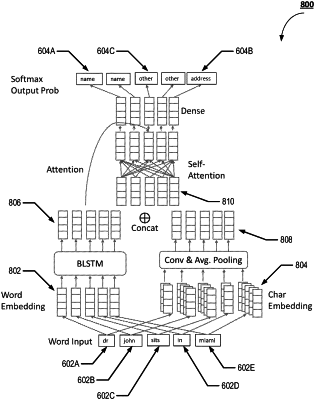| CPC G06F 40/284 (2020.01) | 20 Claims |

|
1. A computer-implemented method comprising:
receiving, by one or more processors and originating from a client computing entity, an application programming interface (API) request that identifies an input unstructured textual data object;
generating, by the one or more processors, a plurality of word-level tokens for the input unstructured textual data object;
determining, by the one or more processors using a significance recognition machine learning model, a significance type for a word-level token of the plurality of word-level tokens by:
(i) determining a word-level embedding for the word-level token,
(ii) determining a character-level embedding for the word-level token,
(iii) determining a fusion representation data object for the word-level token based at least in part on a combination of the word-level embedding and the character-level embedding, and
(iv) determining the significance type for the word-level token based at least in part on the fusion representation data object for the word-level token;
assigning, by the one or more processors, a significance token label to the word-level token based at least in part on the significance type;
generating, by the one or more processors, a label-based feature data object for the input unstructured textual data object based at least in part on a subset of word-level tokens from the plurality of word-level tokens that is associated with the significance token label;
generating, by the one or more processors and a prediction machine learning model, a prediction data object for the input unstructured textual data object based at least in part on the label-based feature data object;
providing, by the one or more processors and to the client computing entity, an API response that identifies the prediction data object; and
initiating, by the one or more processors, the performance of one or more automated prediction-based actions based at least in part on the prediction data object.
|